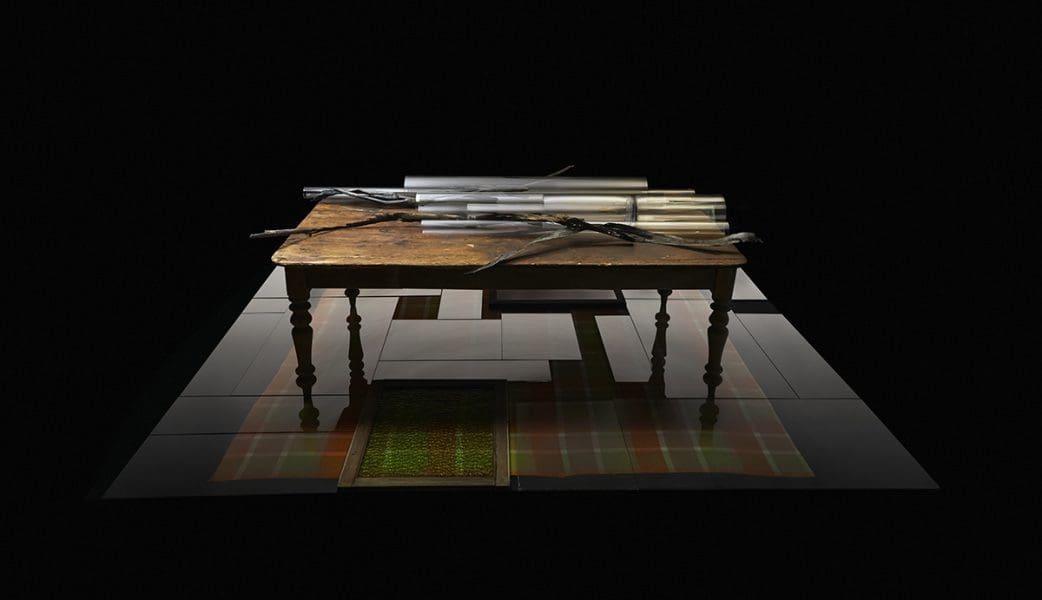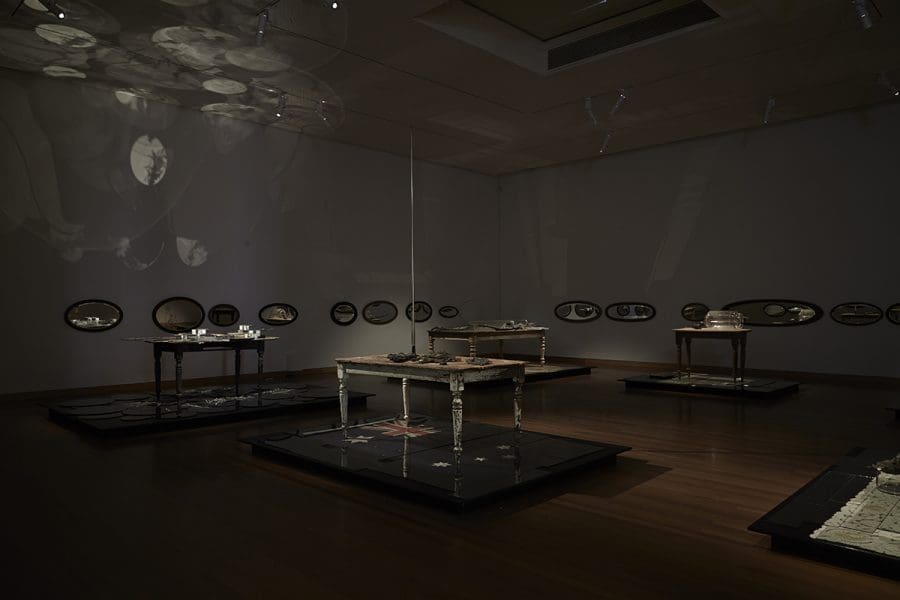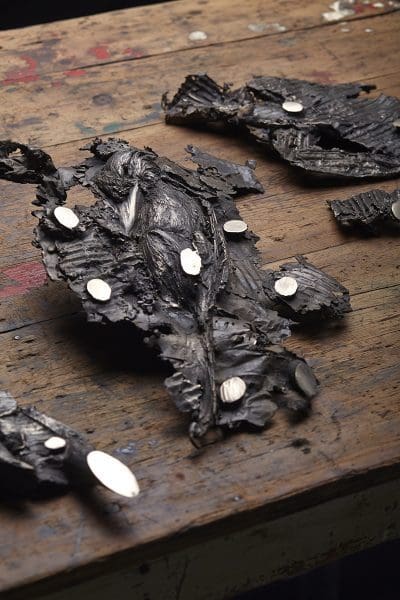
Place-driven Practice
Running for just two weeks across various locations in greater Walyalup, the Fremantle Biennale: Sanctuary, seeks to invite artists and audiences to engage with the built, natural and historic environment of the region.





For the last decade Louiseann King has lived in the Victorian town of Eganstown, raising her young family. Existing between the regional landscape and her own domestic setting, King’s sense of time and duration has been acutely altered during this period of her life. It’s this sense of alteration, as well as thoughts on time, place and the Australian landscape, that ground King’s latest exhibition arbor temporis momentum.
In a dark, low-lit room there is an antique wooden dining table, a British flag, glass vessels, bronze sculptures and crocheted baby blankets.
At a material level King’s work re-contextualises both found and created objects. As she explains, “My practice is one that is essentially intuitive. Collecting, collating and re-contextualising a range of objects is a significant part of the work, along with my core practice of reworking the slight, discarded and ephemeral in materials that are significant and enduring, namely bronze.”
“The use of bronze in my practice is serious, harnessing the history and gravitas of the medium,” says King, “and highly experimental as I push the possibilities of the process and medium, generating the potential for bronze to carry new meanings.”
Entering the artist’s installation also brings forth a synchronicity between landscape and time. “On our 20 acres of native bushland I have experienced seasonality in subtle, sophisticated and profound moments,” says the artist. “My experience of the landscape is one where the minute and the magnificent exist concurrently, where I am awed by the incomparable creation that, in its time, comes into being and, again in its own time, passes.”

What results is a sense of timelessness alongside the perfectly timed elements of life (these ‘timed elements’ being domestic routines and mortality). “The rhythm of raising young children is one that is complex, capricious and yet perfectly timed,” explains King. “As a mother of babies, toddlers and young children my understanding of how a day could be configured was radically altered and I found myself intrigued by this new enveloping time and the landscape that framed this experience.”
arbor temporis momentum
Louiseann King
Bendigo Art Gallery
25 November – 18 February